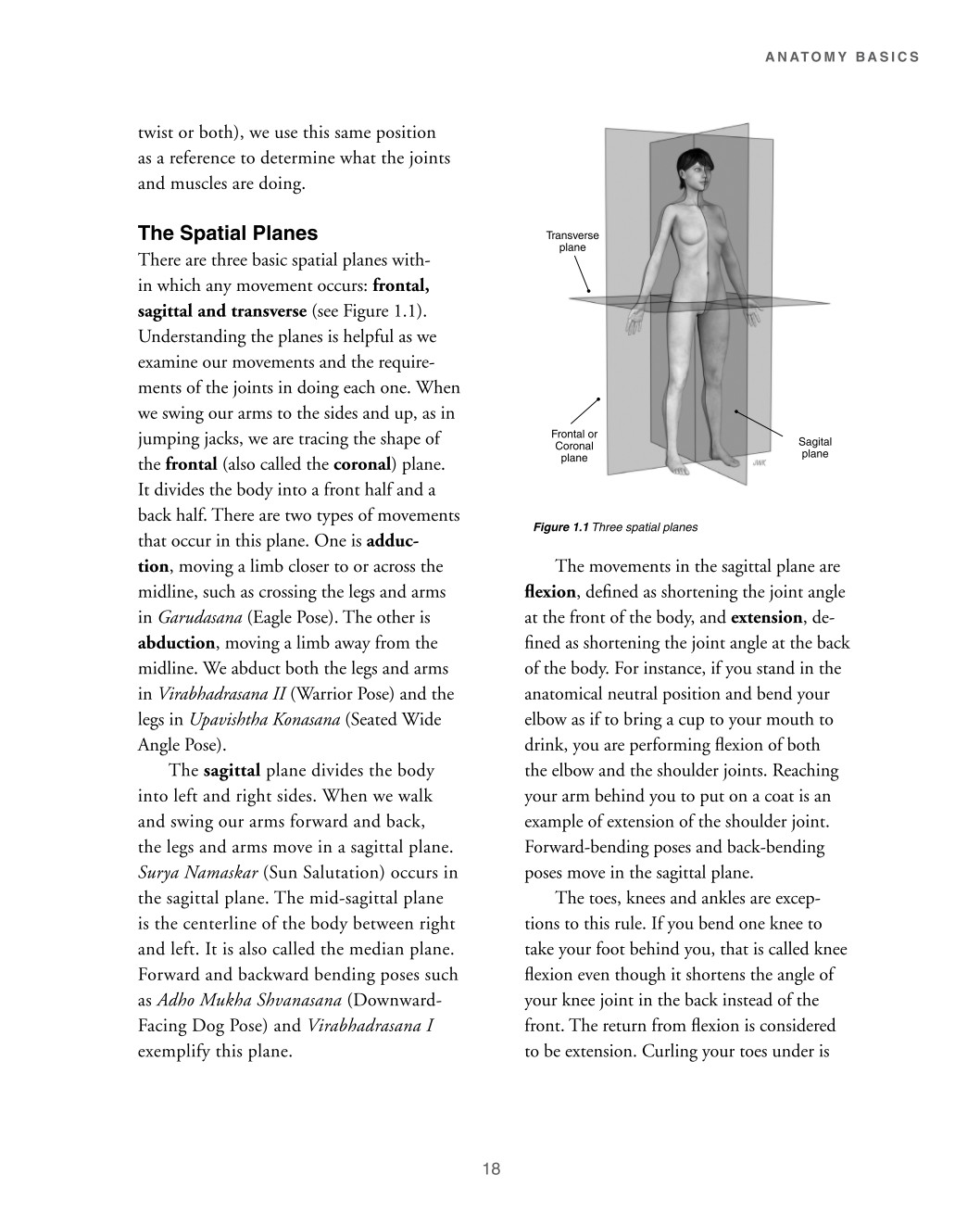

ANATOMY BASICS
twist or both), we use this same position as a reference to determine what the joints and muscles are doing. The Spatial Planes There are three basic spatial planes with- in which any movement occurs: frontal, sagittal and transverse (see Figure 1.1). Understanding the planes is helpful as we examine our movements and the require- ments of the joints in doing each one. When we swing our arms to the sides and up, as in jumping jacks, we are tracing the shape of the frontal (also called the coronal) plane. It divides the body into a front half and a back half. There are two types of movements that occur in this plane. One is adduc- tion, moving a limb closer to or across the midline, such as crossing the legs and arms in Garudasana (Eagle Pose). The other is abduction, moving a limb away from the midline. We abduct both the legs and arms in Virabhadrasana II (Warrior Pose) and the legs in Upavishtha Konasana (Seated Wide Angle Pose). The sagittal plane divides the body into left and right sides. When we walk and swing our arms forward and back, the legs and arms move in a sagittal plane. Surya Namaskar (Sun Salutation) occurs in the sagittal plane. The mid-sagittal plane is the centerline of the body between right and left. It is also called the median plane. Forward and backward bending poses such as Adho Mukha Shvanasana (Downward- Facing Dog Pose) and Virabhadrasana I exemplify this plane. Transverse plane
Frontal or Coronal plane Sagital plane
Figure 1.1 Three spatial planes The movements in the sagittal plane are flexion, defined as shortening the joint angle at the front of the body, and extension, de- fined as shortening the joint angle at the back of the body. For instance, if you stand in the anatomical neutral position and bend your elbow as if to bring a cup to your mouth to drink, you are performing flexion of both the elbow and the shoulder joints. Reaching your arm behind you to put on a coat is an example of extension of the shoulder joint. Forward-bending poses and back-bending poses move in the sagittal plane. The toes, knees and ankles are excep- tions to this rule. If you bend one knee to take your foot behind you, that is called knee flexion even though it shortens the angle of your knee joint in the back instead of the front. The return from flexion is considered to be extension. Curling your toes under is
18